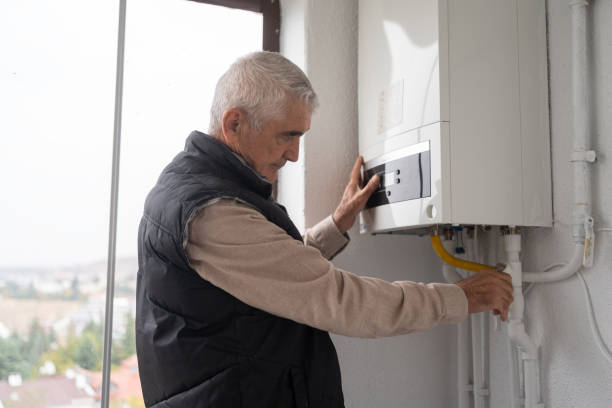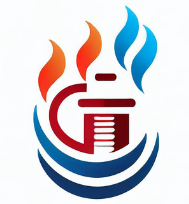A Worcester boiler that keeps turning off when the set temperature is reached is normal. But in some cases, a boiler switching itself off and on frequently indicates a problem. And there are a few reasons for that. Most of these will need to be looked at by a professional. Here, we look at what a normal on and off timeframe is and what isn’t.
Worcester Boiler keeps turning off
A Worcester boiler that repeatedly shuts off before reaching the set temperature is likely malfunctioning. Faulty components like the thermostat or water pump can cause untimely boiler shutdowns. Low water pressure trips the safety cutoff switch. Too much limescale impedes water flow causing overheating.
A worn-out ignition electrode may fail to spark properly leading to ignition lockout. Annual servicing and repairs by a Gas Safe engineer can diagnose and fix shutdown issues. Maintaining system pressure and descaling prevents premature cutoffs.
Worcester Boiler Pressure Too High: What Should It Be?

Causes of a Worcester boiler turning itself off
Faulty Thermostat
One of the most common reasons a Worcester boiler may repeatedly turn off is a faulty thermostat. The thermostat controls the temperature of the water in the boiler system. If it is not working properly, the boiler may think the water is hot enough when it’s not, causing the boiler to shut off before reaching the proper temperature. A faulty thermostat can be caused by dead batteries, incorrect settings, or a broken internal component. Replacing the thermostat can often fix this issue.
Low Water Pressure
Boilers require adequate water pressure to operate safely and effectively. Over time, small leaks in the system can cause pressure drops. Worcester boilers are programmed to automatically shut off when the water pressure drops below a certain threshold, usually around 1 bar of pressure. Frequent topping up of the system and checking for leaks is required to prevent low pressure boiler lockouts.
Boiler Short Cycling
If a boiler is oversized for the building it is heating, it will reach the set temperature quickly before shutting off, then repeat this cycle frequently. This short cycling can cause premature wear and tear over time. Short cycling can also be caused by restricted pipes, boiler pump issues, and poor system design. Consulting with a heating engineer to determine proper boiler sizing and identify any system design flaws is key to stopping short cycling issues.
Limescale Buildup
Hard water areas with high limescale content can lead to limescale accumulation in the heat exchanger and pipes of a Worcester boiler. This buildup restricts water flow and causes the boiler to overheat. Worcester boilers will shut down when the temperature climbs too high due to limescale. Preventing this requires annual descaling of the system by a qualified engineer. Chemical flushes can remove existing limescale. Water softeners also help reduce further buildup.
Worcester Boiler Leaking Water Underneath: What To Do
Ignition Lockout
All Worcester boilers have ignition lockout safety to prevent dangerous gas leakage. Ignition failures can be caused by a lack of gas supply, a faulty thermocouple disrupting the pilot light, or problems with the gas valve or PCB. If ignition fails repeatedly, the boiler enters lockout mode. To restart it after an ignition lockout, the boiler system needs to be reset, which often requires an engineer visit. The underlying cause of ignition failure also needs to be diagnosed and repaired.
Preheat Function On a Boiler
This is one reason why a Worcester combi boiler switches itself on and off and is normal. It helps deliver hot water to the tap quicker when you turn it on. Heat exchangers are made from either aluminium or stainless steel. Aluminium isn’t as conductive as steel so the boiler preheats some water ready for when there is a demand from the hot tap.
High boiler pressure
If the water pressure is too high on the gauge, there could too much air in the system so the boiler is shutting down for safety reasons. Too much air in the system can reduce the water circulation so the required temperature is never reached, but the water temperature is very hot.
Check the pressure on the gauge isn’t too much above 1 bar, if it is, you will need to bleed a radiator until it comes down to around that level.
Which Worcester Boiler is Best?
Troubleshooting Tips for a Worcester Boiler Turning Off
Low Water Pressure
- Check the pressure gauge on the boiler when cold – it should read between 1-1.5 bar in the green section
- Identify any leaks in the system and repair them. This is often the cause of declining system pressure over time.
- Refer to the boiler manual for the filling loop location and instructions to top up water to the correct pressure.
- If unable to maintain pressure, a heating engineer can fully repressurize the sealed system.
Resetting Error Codes
- Locate the reset or lockout reset button on the boiler control panel.
- Press and hold the reset button for 5-10 seconds with the boiler power on.
- This should clear any error codes or lockout codes and restart the boiler after a diagnostic self-check.
- If error codes persist, contact an engineer to further diagnose and resolve the issue.
Bleeding Radiators
- Allow the heating system to cool entirely before bleeding radiators.
- Using a radiator key, turn the valve at the top of each radiator counter-clockwise to release trapped air.
- Stop when water starts leaking out instead of air bubbles.
- Work from the lowest to highest radiators in the system to properly bleed the air
In this case, you may notice your heating bills becoming more expensive as well as it leading to the boiler getting more wear and tear over time, resulting in increased repairs.
How Long Do Worcester Boilers Last?
Worcester Boiler Models Compared
| Boiler Model | Type | Power/Output | Efficiency Rating | Dimensions (HxWxD cm) | Guarantee | Control Options | Key Features |
|---|---|---|---|---|---|---|---|
| Greenstar 25i | Combi | 25 kW | A | 700 x 395 x 278 | 5 years | Mechanical | Simple controls |
| Greenstar 30i | Combi | 30 kW | A | 700 x 395 x 278 | 7 years | Electronic | ErP compliant |
| Greenstar 34CDi | System | 34 kW | A | 715 x 600 x 605 | 10 years | Electronic | Built-in frost protection |
| Greenstar 42CDi | Combi | 42 kW | A | 715 x 600 x 605 | 10 years | Electronic | Quiet Mark approved |
If you want a professional to look at your Worcester boiler, we recommend Hometree home care that can help. Hometree offers customers peace of mind with home care packages for their boiler, central heating, plumbing, drains and home electrics all at an affordable monthly or annual cost. Click here for more information.
Hometree’s aim is to take the stress out of boiler servicing and home maintenance with unlimited call-outs and a 24/7 helpline, as well as a no price-hike promise.

Combi boiler hot water goes cold
A common problem with combi boilers is hot water goes cold before getting hot again when showering. One reason is a sudden increase in demand when someone in the house turns a hot tap on. This puts extra demand on the combi to supply both outlets at the same time. Another reason could be an internal problem like a blocked heat exchanger, especially on old boilers.
If you feel it’s time for a new boiler, check out BoilerCentral.com which have a wide range of boilers at a great price including installation and very long warranties: Click here to see why we recommend them.
Summary
The main causes of a Worcester boiler that keeps turning off are:
- The preheat function.
- Boiler short cycling.
- Faulty thermostat.
- Oversized boiler.
- High boiler pressure.
- Low water pressure.
Related Articles:
- Why Does My Worcester Boiler Keep Losing Pressure? Easy Guide
- Most Reliable Boiler: A Rated Energy Efficient Boilers Compared
*The information in this article should be used for general guidance only and not as financial advice. Full details are on the link in the footer to our disclaimer page. Always discuss your requirements with a competent and suitably qualified professional before undertaking any work.

